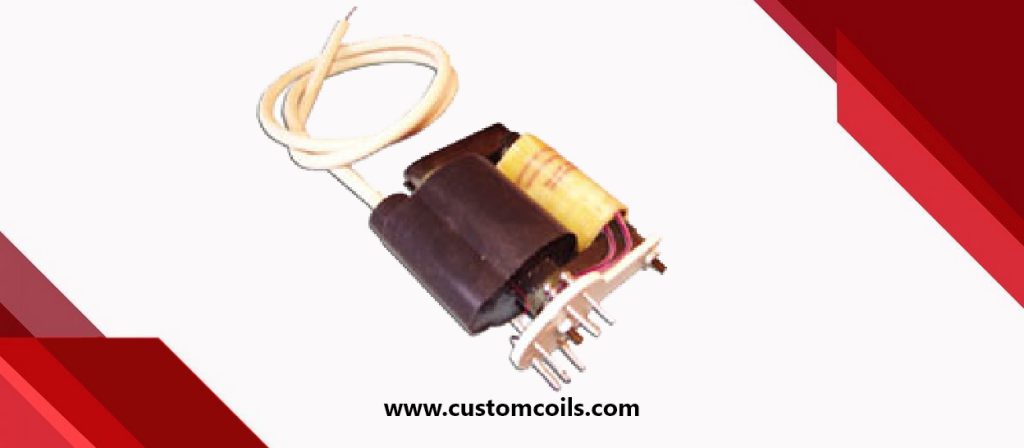A flyback transformer is a type of transformer used to convert electrical energy from one circuit to another. When an AC voltage is applied to the primary coil, it produces a magnetic field, which induces an electric current in the secondary coil. Flyback transformers are extensively used in high-speed switching devices, monitors, computer power supplies, and fluorescent lights, among others. Flyback transformers are also called step-up transformers since they can deliver a high voltage from a lower AC voltage. With a basic understanding of what a flyback transformer is, we will now discuss different parameters involved in a flyback transformer design, which are listed in this post.

Flyback Transformer Design Basics
A flyback transformer usually features three parts: a core, a primary coil and a secondary coil. When it comes to flyback transformer design for your applications, there are several specifications or parameters to be shared with the manufacturer of the transformer. Providing the right and accurate values for the following parameters is crucial to the proper design and manufacturing of a flyback transformer.
- Power Supply Specification: Under this category, you need to address factors such as output voltage, rated output current (max.), overload protection operating current, input voltage, input frequency, conversion efficiency, and switching frequency. The power supply specification for a flyback transformer should also consider load current, operating frequency and duty cycle, and switching mode power supply.
- Core: The core of the flyback transformer is designed to give the required inductance and frequency. While sharing design specifications for the core, it is significant to provide the right value for the required effective magnetic path length of the core, effective cross-section area of the core, and relative permeability (amplitude permeability), among others.
- Usage Condition: A few of the most important specifications to be provided under this category include diode surge voltage at the secondary side (estimate), input voltage when setting operation mode, output current when setting operation mode, continuity level when setting operation mode (For continuous mode only), among others.
- Other Crucial Parameters: Transformers are used in many industrial applications to change voltage levels. If a transformer is not designed properly, it can cause serious issues. Hence, providing the right details for the following parameters is also crucial to get the design and manufacturing right as per expectations.
- Output power
- Ripple voltage
- Minimum input voltage
- Maximum input voltage
- Input current
- Switching cycle
- Maximum diode voltage at secondary side
- Primary side inductance
- Number of turns at primary side
- Number of turns at secondary side
- Core gap length
- Peak current at primary side
- Current at primary side
- Current at secondary side
- Output capacitor current
- Magnetic flux density in core
A successful flyback transformer design requires experience and knowledge of all aspects of transformer construction. The process of designing a transformer is complex, and any error can result in a faulty design, which may cause the unit to fail during the operation. Hence it is important to choose the best manufacturer with experience, technical efficiency, right equipment and manufacturing capabilities. Not all manufacturers are the same and hence you need to check out their history, reputation and reliability before selecting one. You can also ask references from people who have already used their services before.
Now that you know about flyback transformers, parameters to consider when designing them, and the significance of choosing the right manufacturer to get the right service for you. This post ends by letting you know about a leading manufacturer of flyback transformers named Custom Coils. The company has years of experience and expertise in providing clients with custom transformers and other specialty magnetic components.
